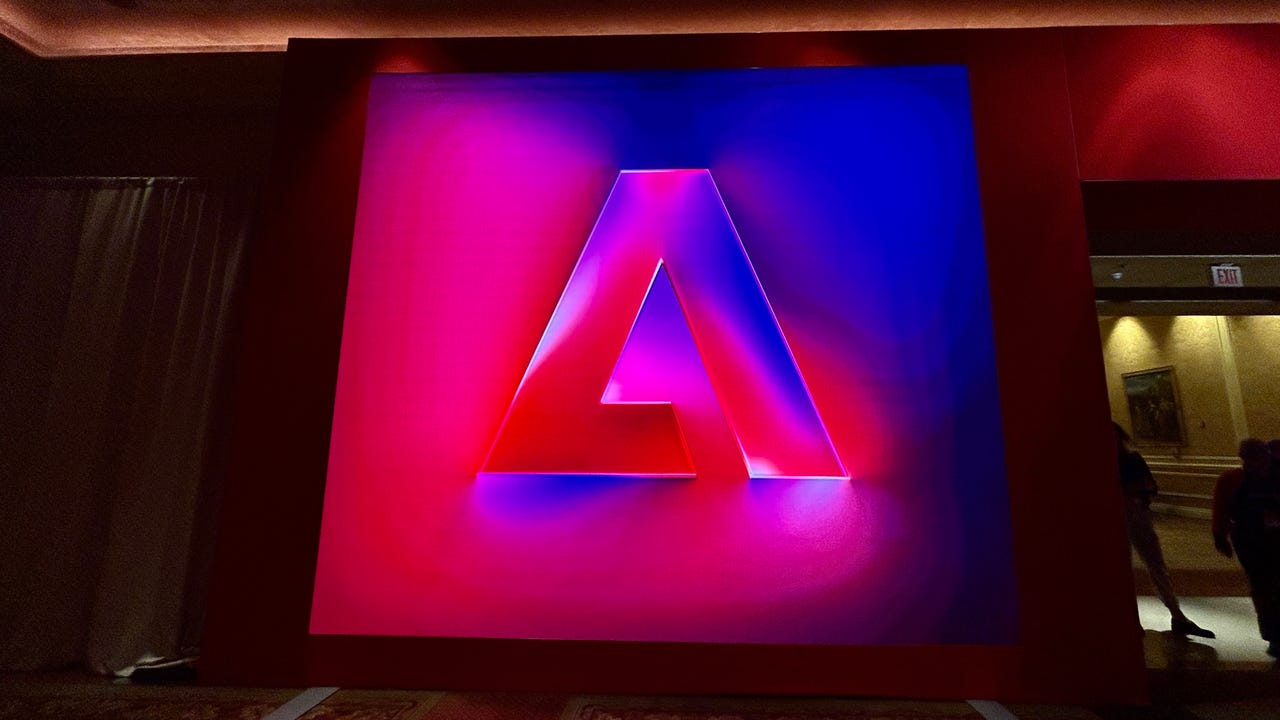Adobe announces generative AI tools to reinvent ad campaigns

Every year, Adobe showcases its latest offerings for professionals at Adobe Summit. Unsurprisingly, generative AI took center stage at this year's event and dominated the new product announcements.
On Tuesday, the company unveiled generative AI tools that help brands and enterprises create and manage assets. The highlight was easily the launch of GenStudio, an AI-first application that centralizes all your content needs in one place. GenStudio users can create content, access brand assets, view and track campaigns, measure campaign performance, and more.
Also: Saving hours of work with AI: How ChatGPT became my virtual assistant for a data project
AI is present throughout GenStudio to assist with these tasks. For instance, to ease content production, brands can find images and generate variations using Adobe Firefly, Adobe's generative AI suite of tools.
Custom Models, another new offering unveiled at Adobe Summit, lets enterprises train and customize models, including fine-tuning Adobe Firefly with their brand's own assets to ensure that any generated content is on-brand.
"Generative AI enables a fundamental shift in the relationship between brands and their customers, creating a transformative moment for business leaders to drive profitable growth while delivering new digital experiences," Anil Chakravarthy, Adobe's president of Digital Experience Business, said.
Also: 5 ways CIOs can manage the business demand for generative AI
Brands can also generate different variations of marketing assets with the peace of mind that the generated content is on-brand. If it's not, GenStudio will alert you with suggestions on how to remedy the problem.
Generative AI can even help brands at the analytics level. GenStudio uses a feedback loop to understand which generated assets performed well, with insights about the attributes. Adobe then uses those attributes to inform generative AI prompts further.
Adobe also unveiled a new Adobe Experience Platform AI assistant, adding a chatbot to the Adobe Experience Platform that can answer technical questions as well as automate certain tasks. The AI assistant is powered by Large Language Models (LLMs) and Adobe's product knowledge to provide "unique insights based on customer data, campaigns, audiences, and business goals—all in a brand-safe way and with a privacy-first mindset," the company said.
Other applications, including Adobe Experience Manager (AEM) Sites, Adobe's content management system, also got a generative AI upgrade. With the new AEM Sites variant generation feature, brands can take an asset and generate different variations to best speak to different audiences. For example, a brand could take a webpage and generate variants wherein the copy is personalized for target audiences, according to Adobe.
Also: AI is changing cybersecurity and businesses must wake up to the threat
Other announcements included new capabilities in Adobe Journey Optimizer; Adobe Journey Optimizer B2B Edition, a new enterprise application; and a new unified experimentation capability in Adobe Experience Cloud. ZDNET is on the grounds at the event, so stay tuned for the latest event coverage.
Disclosure: The cost of Sabrina Ortiz's travel to Las Vegas for Adobe Summit was covered by Adobe, a common industry practice for long-distance trips. The judgments and opinions of ZDNET's writers and editors are always independent of the companies we cover.
